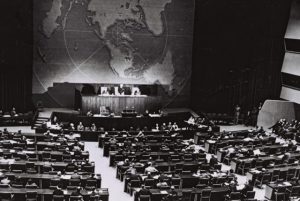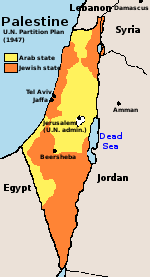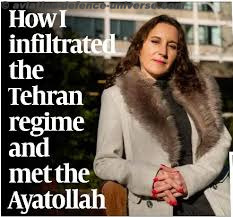
By Gayatri Sahaay
Pune, India. 21 May 2021. Although the recent violence in Israel and Palestine seems highly significant to us, this is far from the epitome of violence that the region and its peoples have experienced. The political conflict began in the 20th century when Jews fleeing persecution in Europe wanted to establish a national homeland in what was a Muslim majority territory in the British Empire. Ever since then, the two self-determination projects have fought various wars over the territory, having led to drastic humanitarian consequences in the Middle East.
Undoubtedly, the United Nations has played a vital role in the present status quo of the conflict. Ever since the British handed over responsibility of the issue to the UN in 1947, the territory has been plagued with unrest between the native Arabs and Jewish immigrants. The UN has, in almost every case, responded to major events with debates and resolutions on a variety of issues, such as: mutual recognition, security, border establishment, water rights, control of Jerusalem, Israeli settlements, Palestinians’ freedom of movement, and Palestinians’ right-of-return.
The earliest action taken by the UN was to pass UNGA Resolution 181, which proposed the UN Partition Plan in 1947. The plan aimed to give 56.47% of Palestine to the Jewish state and 43.53% to the Arab state, with an international enclave around Jerusalem. Although the UN responded promptly to the issue, it was never formally executed, since there were no established consequences for violation. Since the two parties were never consulted, the Jews celebrated while the Arabs rejected it. Within a few days, full scale Jewish-Arab fighting broke out in Palestine.
Following this, a war involving five Arab states and Israel broke out in 1948. During this war, Resolution 194 reiterated the UN’s claim on Jerusalem and resolved that “the refugees wishing to return to their homes and live at peace with their neighbours be permitted at the earliest date”. Although timely, the resolution did not directly address the war or attempt to reprimand the perpetrators. Nevertheless, it was a milestone in proposing the Palestinians’ right-of-return and bringing the refugee crisis to the forefront.

Yet another significant development was the Six-day War in 1967, which occurred due to mounting tensions between Israel and its Arab neighbours. Months of debate took place at the UNSC and UNGA, before, during, and after the war. The UNSC issued Resolution 242, stressing “the inadmissibility of the acquisition of territory by war” and called for the “withdrawal of Israeli armed forces from occupied territories”. It also spelled out the ‘Land-for-Peace’ principle, which was, and still is, under active discussion among the international community. The resolution was agreed upon by Israel, who offered to give up Sinai and the Golan in exchange for Peace. However, the Arab states replied with the “Three No’s – no peace, no recognition and no negotiation”.
The 1970s saw several events bringing the conflict to the forefront due to the emergence of armed groups in Palestine. The Munich Olympic massacre was a terrorist attack by members of the Palestinian Black September, who murdered eleven members of the Israeli Olympic team. The attack saw an Israeli response with the bombing of ten bases belonging to the Palestinian Liberation Organization (PLO). Within the UN, the spotlight, however, was put on terrorism as opposed to the main conflict in Israel.
During the First Intifada in 1987, a mass uprising against Israeli occupation began in Gaza and the West Bank. The Israeli troops responded, causing heavy loss of life among Palestinian civilians. This provoked international condemnation. In subsequent Resolutions 607 and 608, the UNSC demanded Israel to cease deportations of Palestinians. However, the resolutions made little impression on Israel, which kept on obstructing UN investigations.
Further withdrawals from occupied land were hindered by disagreements and final-status talks led nowhere. Frustration was building in the Palestinian population, and demonstrations developed into the Second Intifada in 2000. In an exceptional example of international consonance, the UNSC passed Resolution 1397, which became the first resolution to call for a ‘two-state’ solution, with all countries voting in favour and one abstaining.
And with regards to the most recent clashes in May 2021, the UN has held several emergency meetings. However, no common consensus regarding an immediate ceasefire has emerged due to the United States’ stance.
Additionally, throughout the crisis, the UN set up various charter-based bodies committed solely to the betterment of the humanitarian crisis. These include the UN Conciliation Commission for Palestine (UNCCP), the UN Relief Works Agency (UNRWA), the Committee on the Exercise of the Inalienable Rights of the Palestinian People, the UN Division for Palestinian Rights, the UN Truce Supervision Organization (UNTSO), and the Special Committee on Israeli Practices. These organizations have had a major contribution to providing education, healthcare, shelter, and legal assistance to refugees.
But the fact remains that, despite various attempts, Israelis and Palestinians have failed to reach a final peace agreement. It is without question that the solution to this problem can only emerge from initiatives spearheaded by the UN. There is no other organization that has been involved for such a long duration and also has the necessary resources available in order to establish long-term diplomatic channels, deploy a multilateral peace-keeping force, provide administrative support, and employ adequate monitoring mechanisms for any agreed stipulations. But clearly, the UN has been unable to resolve the crisis.
The reasons for this can be multi-fold, some attributable to the UN’s shortcomings and some to the complexity of the situation. Primarily, the UN’s limited mandate means that is unable to “enforce” resolutions and impose any consequences for non-adherence. Due to this, Israel has repeatedly violated resolutions without facing any penalization.
The second reason is related to the UNSC membership procedure. Since candidates for the UNSC are proposed by regional blocs, the Arab League is usually included, but they do not propose Israel. Consequently, Israel has never been elected to the UNSC. The Council repeatedly condemns Israel, but if Israel is not even involved in the dialogue, how can any agreement be established?

Thirdly, the Veto Power is a hindrance to the resolution of this conflict. Till date, the UNSC has vetoed 65 resolutions critical to the resolution of conflicts in the Middle East. Without the unanimous approval or minimal abstention of all permanent members, the UN Charter only enables the UNSC to “observe, report on, and make recommendations” regarding international conflicts.
With that in mind, what steps can the UN now take to resolve what is being called the “most intractable conflict of our time”? The primary approach to solving the conflict is a “two-state solution” that establishes Palestine as an independent state in Gaza and most of the West Bank, leaving the rest to Israel. Although the two-state plan is clear in theory, the two sides are deeply divided over how to enforce it.
The alternative is a “one-state solution”, wherein all of the land becomes either one big Israel or one big Palestine. Most observers think this would cause more problems than it would solve. However, this outcome is becoming more likely over time due to political and demographic reasons.
While it is difficult to say which solution will be practical and how both parties can be convinced, the United Nations will have to ensure that any agreement must have an equal cost-benefit impact for both parties, the support of the domestic constituencies, a constructive influence on the existing social architecture, and the cessation of human rights violations, in order for a sustainable solution that will ensure long-term peace.
























































































































